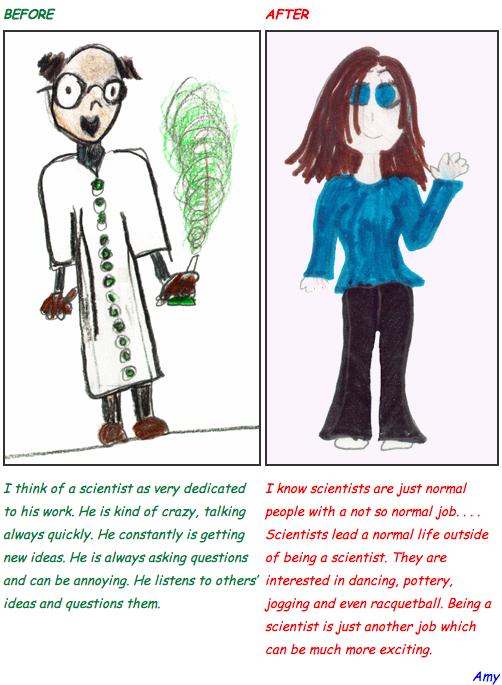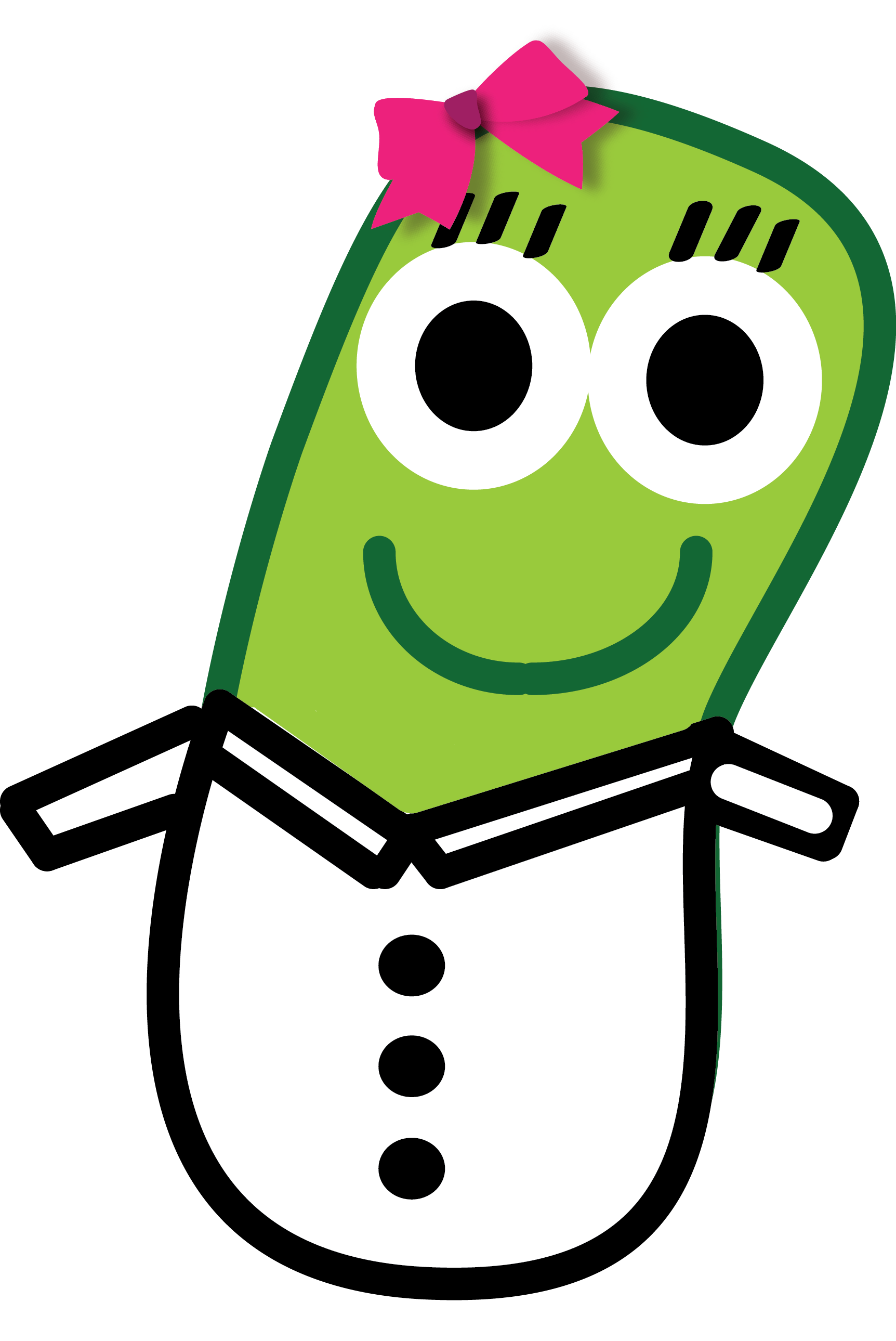Team:UNAM Genomics Mexico/prueba
From 2012.igem.org
| Line 2: | Line 2: | ||
<br /> | <br /> | ||
| - | <center><h1>''' | + | <center><h1>'''Who is Mrs. Cohnnie PhD'''</h1></center> |
| - | <br /><br /> | + | |
| - | + | <br /> | |
| - | < | + | <br /> |
| - | + | <h2>Who is Mrs. Cohnnie, PhD?</h2><br /> | |
| - | + | <br /> | |
| - | + | ||
| - | < | + | “''Wangari Maathai goes to a village in Kenya. She talks with the women and explains that the land is barren because they have cut and sold the trees. She gets the women to plant new trees and water them, drop by drop. In a matter of five or six years, they have a forest, the soil is enriched, and the village is saved. The poorest and most backward societies are always those that put women down. Yet this obvious truth is ignored by governments and also by philanthropy. For every dollar given to a women's program, 20 dollars are given to men's programs. Women are 51 percent of humankind. Empowering them will change everything -- more than technology and design and entertainment. I can promise you that women working together -- linked, informed and educated -- can bring peace and prosperity to this forsaken planet. In any war today, most of the casualties are civilians, mainly women and children. They are collateral damage. Men run the world, and look at the mess we have.''”<br /><br /> |
| + | Isabel Allende, in the TED Talk “Tales of Passion” | ||
<html> | <html> | ||
| - | < | + | <object width="526" height="374"><param name="movie" value="http://video.ted.com/assets/player/swf/EmbedPlayer.swf"></param><param name="allowFullScreen" value="true" /><param name="allowScriptAccess" value="always"/><param name="wmode" value="transparent"></param><param name="bgColor" value="#ffffff"></param><param name="flashvars" value="vu=http://video.ted.com/talk/stream/2007/Blank/IsabelAllende_2007-320k.mp4&su=http://images.ted.com/images/ted/tedindex/embed-posters/IsabelleAllende-2007.embed_thumbnail.jpg&vw=512&vh=288&ap=0&ti=204&lang=en&introDuration=15330&adDuration=4000&postAdDuration=830&adKeys=talk=isabel_allende_tells_tales_of_passion;year=2007;theme=women_reshaping_the_world;theme=master_storytellers;theme=rethinking_poverty;theme=words_about_words;theme=the_creative_spark;theme=media_that_matters;event=TED2007;tag=entertainment;tag=global+issues;tag=love;tag=parenting;tag=storytelling;tag=women;tag=world+cultures;&preAdTag=tconf.ted/embed;tile=1;sz=512x288;" /><embed src="http://video.ted.com/assets/player/swf/EmbedPlayer.swf" pluginspace="http://www.macromedia.com/go/getflashplayer" type="application/x-shockwave-flash" wmode="transparent" bgColor="#ffffff" width="526" height="374" allowFullScreen="true" allowScriptAccess="always" flashvars="vu=http://video.ted.com/talk/stream/2007/Blank/IsabelAllende_2007-320k.mp4&su=http://images.ted.com/images/ted/tedindex/embed-posters/IsabelleAllende-2007.embed_thumbnail.jpg&vw=512&vh=288&ap=0&ti=204&lang=en&introDuration=15330&adDuration=4000&postAdDuration=830&adKeys=talk=isabel_allende_tells_tales_of_passion;year=2007;theme=women_reshaping_the_world;theme=master_storytellers;theme=rethinking_poverty;theme=words_about_words;theme=the_creative_spark;theme=media_that_matters;event=TED2007;tag=entertainment;tag=global+issues;tag=love;tag=parenting;tag=storytelling;tag=women;tag=world+cultures;&preAdTag=tconf.ted/embed;tile=1;sz=512x288;"></embed></object> |
| - | < | + | </html> |
| - | < | + | <br /> |
| - | < | + | <br /> |
| - | < | + | Mrs. Cohnnie PhD Presentation |
| - | < | + | <br /> |
| - | </ | + | <html> |
| - | </ | + | <iframe width="640" height="480" src="http://www.youtube.com/embed/Hk7tSGd4Z7s" frameborder="0" allowfullscreen></iframe> |
</html> | </html> | ||
| - | |||
| - | <br /><br /> | + | As we said in our main Human Practices wiki page, one of the perceptions towards scientists we wanted to fight is that of an individual detached from society. But there is another perception we consider urgent to address, especially in the 21st century.<br /> |
| + | <br /> | ||
| + | [http://ed.fnal.gov/ Fermilab] conducted back in 2010 an activity that has proven one of the most enlightening to understand the issues at stake in public perceptions of scientists. The project [http://ed.fnal.gov/projects/scientists/index.html “Who's the Scientist?”] was created to invite seventh graders to the facilities of Fermilab. In the lab, children would have chance to spend a day with real scientists and talking with them (corresponding!). The most interesting thing of all is the series of drawings presented as part of the project. Kids were asked to draw scientists before and after they met them and spent the day with them. The “before” set of drawings is not surprising at all: children believed that scientists fall into the stereotype of mad scientists, doing their stuff. The “after” set of drawings is more heart-warming: children learnt that scientists are just like any other person in the world, with a not-so-normal job (we think that the only difference is that we enjoy it more on average!). But there was another surprising discovery.<br /> | ||
| + | <br /> | ||
| + | <br /> | ||
| + | [[File:Unamgenomcisfermilab.jpg]] | ||
| - | + | <br /> | |
| + | <br /> | ||
| + | The majority of the “before” drawings are male scientists. This changed in an interesting way in the “after drawings”: | ||
| + | Among girls (14 in total), 36% portrayed a female scientist in the “before” drawing, and 57% portrayed a female scientist in the “after” drawing.<br /><br /> | ||
| + | Among boys (17 in total), 100% portrayed a male scientist in the “before” drawing, and 100% portrayed a male scientist in the “after” drawing.<br /><br /> | ||
| - | <br /><br /> | + | Gender bias is an issue nowadays. And it is important to do whatever it is on our hands to fight it as well.<br /><br /> |
| - | + | When deciding the image (or as some call it, “mascot”) of our team, we discovered that female “mascots” have been underrepresented at iGEM. Thus, we decided that our main “friend, advisor and companion” would be a female PhD, with a normal life, who goes to the beach and enjoys spending time outside in the winter. Our “mascot” is Mrs. Cohnnie, PhD. | |
| - | + | ||
| - | + | ||
| - | + | ||
| - | + | ||
<br /><br /> | <br /><br /> | ||
| - | |||
| - | |||
| - | |||
| - | + | [[File:UnamgenomicsmissLogomujer.png | 400px]] | |
| - | + | ||
<br /><br /> | <br /><br /> | ||
| - | + | Mrs. Cohnnie’s name was inspired in one of the discoverers of ‘’B. subtilis’’, [http://en.wikipedia.org/wiki/Ferdinand_Cohn Ferdinand Cohn] (well, actually the one that gave it its current name) | |
| - | </ | + | <br /> |
| - | + | This might not be a breakthrough activity, or a massive campaign in favor of feminism. But the few people that have seen Mrs. Cohnnie and learnt about these ideas so far have been made aware of gender bias in the images and practice of science. We hope that any iGEM team that reaches this page in the future would consider doing something as little as choosing a feminine mascot to fight gender biased perceptions of scientists as well. | |
| - | |||
| - | |||
<br /><br /> | <br /><br /> | ||
| - | |||
| - | |||
| - | |||
| - | |||
| - | |||
| - | |||
| - | |||
| - | |||
| - | |||
| - | |||
| - | |||
| - | |||
| - | |||
}} | }} | ||
Revision as of 02:50, 14 October 2012

Who is Mrs. Cohnnie PhD
Who is Mrs. Cohnnie, PhD?
“Wangari Maathai goes to a village in Kenya. She talks with the women and explains that the land is barren because they have cut and sold the trees. She gets the women to plant new trees and water them, drop by drop. In a matter of five or six years, they have a forest, the soil is enriched, and the village is saved. The poorest and most backward societies are always those that put women down. Yet this obvious truth is ignored by governments and also by philanthropy. For every dollar given to a women's program, 20 dollars are given to men's programs. Women are 51 percent of humankind. Empowering them will change everything -- more than technology and design and entertainment. I can promise you that women working together -- linked, informed and educated -- can bring peace and prosperity to this forsaken planet. In any war today, most of the casualties are civilians, mainly women and children. They are collateral damage. Men run the world, and look at the mess we have.”
Isabel Allende, in the TED Talk “Tales of Passion”
Mrs. Cohnnie PhD Presentation
As we said in our main Human Practices wiki page, one of the perceptions towards scientists we wanted to fight is that of an individual detached from society. But there is another perception we consider urgent to address, especially in the 21st century.
Fermilab conducted back in 2010 an activity that has proven one of the most enlightening to understand the issues at stake in public perceptions of scientists. The project “Who's the Scientist?” was created to invite seventh graders to the facilities of Fermilab. In the lab, children would have chance to spend a day with real scientists and talking with them (corresponding!). The most interesting thing of all is the series of drawings presented as part of the project. Kids were asked to draw scientists before and after they met them and spent the day with them. The “before” set of drawings is not surprising at all: children believed that scientists fall into the stereotype of mad scientists, doing their stuff. The “after” set of drawings is more heart-warming: children learnt that scientists are just like any other person in the world, with a not-so-normal job (we think that the only difference is that we enjoy it more on average!). But there was another surprising discovery.

The majority of the “before” drawings are male scientists. This changed in an interesting way in the “after drawings”:
Among girls (14 in total), 36% portrayed a female scientist in the “before” drawing, and 57% portrayed a female scientist in the “after” drawing.
Among boys (17 in total), 100% portrayed a male scientist in the “before” drawing, and 100% portrayed a male scientist in the “after” drawing.
Gender bias is an issue nowadays. And it is important to do whatever it is on our hands to fight it as well.
When deciding the image (or as some call it, “mascot”) of our team, we discovered that female “mascots” have been underrepresented at iGEM. Thus, we decided that our main “friend, advisor and companion” would be a female PhD, with a normal life, who goes to the beach and enjoys spending time outside in the winter. Our “mascot” is Mrs. Cohnnie, PhD.
Mrs. Cohnnie’s name was inspired in one of the discoverers of ‘’B. subtilis’’, Ferdinand Cohn (well, actually the one that gave it its current name)
This might not be a breakthrough activity, or a massive campaign in favor of feminism. But the few people that have seen Mrs. Cohnnie and learnt about these ideas so far have been made aware of gender bias in the images and practice of science. We hope that any iGEM team that reaches this page in the future would consider doing something as little as choosing a feminine mascot to fight gender biased perceptions of scientists as well.
 "
"







